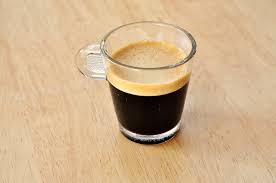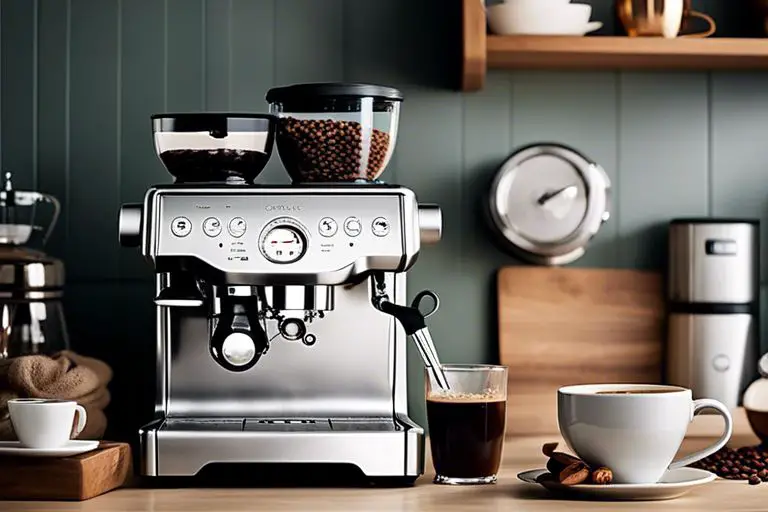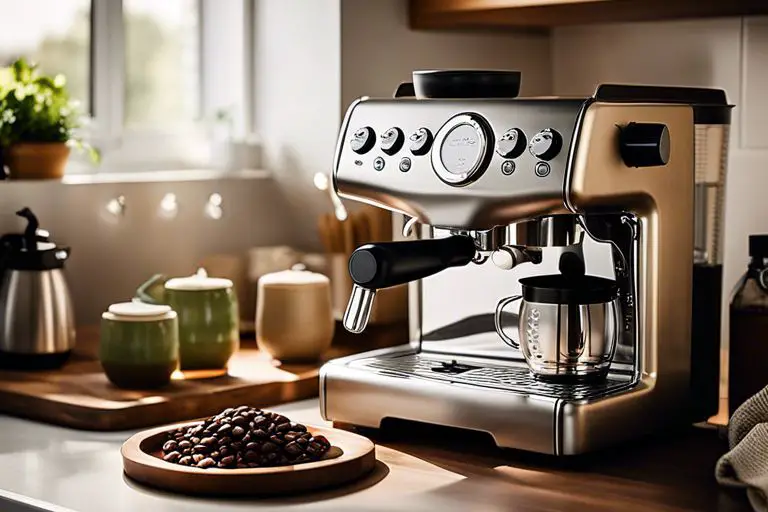Crema on coffee is a thin layer of foam that sits on top of a shot of espresso once it has been dispensed from an espresso machine.
That explains what crema is from a visual perspective but there are many different elements to crema on coffee other than what it looks like.
For example, you can tell just by looking at the crema if the coffee you are using is fresh or stale and a whole lot more as well.
The word crema in coffee terms was only invented in the 1940’s by the inventor of the modern coffee machine, Achille Gaggia and his name still lives on today in the form of the Gaggia brand that produces mid-range to top end coffee machines for domestic and commercial use.
More primitive coffee machines have been around since the late 1800’s but the espresso machine as we know it today has evolved from the version created by Gaggia in the 1940’s.
Pressure in a boiler forced water into a cylinder where is was further pressurised by a lever that was pulled down by a barista to force the water through the water at high pressure.
This is where the phrase “pulling a shot” came from because a lever literally had to be pulled in order to extract the coffee from the coffee grounds and into the coffee cup below.
Due to the high level of pressure that could be achieved, for the first time ever coffee was produced that had a layer foam that sat across the top and Achille Gaggia called this Caffe Crema (translated into English is cream coffee).
With the birth of Caffe crema and the wonderful “golden layer” that sits on top of a perfectly pulled coffee the world was introduced to crema on coffee.
What causes coffee crema?
A lot has happened in the last 80 years or so since the invention of the first espresso machines that could produce enough pressure to create the crema we are familiar with today and we now have very specific science that tells us exactly how you get crema on coffee.
The crema that sits on top of espresso is mostly carbon dioxide and by definition is an odourless gas so the crema itself does not any much flavour and is more for show.
When coffee is roasted the carbon dioxide gets trapped inside the coffee beans.
When the beans are ground the water is forced through the ground coffee producing the beverage we all know and love but it also forces out the trapped carbon dioxide gas to create the crema film that sits on top of the coffee.
What does crema tell us about coffee?
Perhaps the most important and helpful piece of information that we can get from crema is how fresh the coffee is.
We would always recommend buying freshly roasted coffee beans and the best way to know if they have been freshly roasted is to check the date on the packaging for the “roasted on” date or “produced date”
This is not to be confused with the use by date that is always a date way into the future.
Mass produced beans normally won’t have the date the beans were roasted so if you don’t know that date you can make a judgment as to how fresh they are but looking at the crema.
The more time that has passed since the beans were roasted the more of the trapped carbon dioxide escapes from the coffee beans and the thinner the crema will be.
Take a close look at your espresso the next time you pull a shot and if the crema is non-existent or very thin then it is likely that your coffee beans are not fresh and were roasted some time ago.
For more information about this you can see this article on how to choose and buy coffee beans in the UK
The way you grind your coffee beans will also impact the crema because for espresso you need a fine grind so that the extraction is just right to avoid a weak or bitter flavour to your coffee.
If you know that your coffee beans are fresh but you are not getting a decent crema then it could be that the coffee beans have been ground too coarsely and the coffee grounds have been under extracted.
This is an article that explains in detail how to grind coffee beans in order to achieve the best results.
The type of roast you are using will impact the crema as well. The longer a bean is roasted for the more carbon dioxide that gets trapped inside the bean and therefore the more crema it will produce.
Lighter roast beans will naturally have less carbon dioxide and so there will be less crema.
Lighter roasts tend to be of a higher quality than darker roasts so you should not judge an espresso by the size of its crema but fresh coffee will always produce a crema whereas stale coffee may produce none at all.
Something else to bear in mind is that the less water you use the less of a crema you will achieve so if you like a very strong espresso drink such as a ristretto then expect more of a crema than if your drink of choice is an americano.
The key takeaway is that it is difficult to attribute the size of a crema to a quality coffee but you can use the size of the crema to determine whether the coffee you are using is fresh or not.
The best thing you can do is to use your senses of smell and taste to judge a coffee rather than a visual assessment based on the crema alone.
Here is a short video that explains exactly what crema is:




